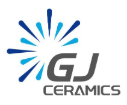NEWS
Featured Products
Contact Details
-

Shidun Industry Area ,DEhua ,Fujian ,China
-

+0086-595-23556966
-

sales@fdgjc.com
-

WeChat ID:18559669798
NEWS
Overseas Customization in the History of Dehua Porcelain
【 date:2023-04-21 12:57:45】
Three Europeans, one big lion, and three little lions gathered together, making people happy and lions happy... "The white glazed lion riding statue of Dehua Kiln is currently stored in the Shishi Haisi Museum, which is clearly a customized Dehua porcelain commercial item or" imported item ". In 1702, the East Indian merchant ship Dashwood arrived in England from Xiamen, and the list of goods recorded "humans riding monsters", "humans riding horses", "humans riding antelopes", "humans riding dolphins", "humans riding lions", "humans riding goats", and "humans riding dragons".
In recent years, many imported goods have returned, and many local collectors in Dehua have retrieved many high-quality Dehua kiln ceramics from overseas. They have found that foreign collections not only include ceramics with exotic styles, but also many traditional ceramic products. Carefully admiring the statue of a man riding a lion, the European on the ground is holding "Brother Kong Fang".
The Dehua Ceramic Museum has collected over 10 foreign books specifically discussing Dehua ceramics, including British collector Donald Li's "Chinese White - Fujian Dehua Porcelain". This book reads: 'Augustus the Great has no less than 155 small lion shaped water droplets.' What is the use of a foreigner collecting so many water droplets? They don't need a brush to write. In addition to water droplets, in the 160 page illustrations of this book, there are as many as 44 porcelain lions or lion element ceramics, almost covering the styles of domestic porcelain lions, many of which are rare boutiques in China. For example, there is a picture of a lion porcelain sculpture that was not intubated in the early 18th century. Porcelain lions have been used as incense sticks in Dehua for a long time, making them practical objects. Most of them are placed in tombs, and the porcelain lions that have been removed from the sticks have only been upgraded to desk decorations and included in the study. This porcelain pair of lions is an early demonstration of this evolutionary process.
The book also mentions two European couples sitting on a large lion and carrying a cub, who were brought to New Zealand by Olaf van Cortland in 1638. From this, it can be seen that the customized samples of Dehua ceramics were no later than the Ming Dynasty.
The book "Chinese Seals Discovered in Ireland" published by British author Edmund Getty in 1850 studied more than 70 white glazed porcelain seals discovered in Dublin, Belfast, and the ruins of the ancient castle of Annik. These seals were produced in the Dehua kiln during the Ming and Qing dynasties, and the earliest discovered one was in the 45th year of the Qianlong reign of the Qing Dynasty (1780). These seals are often buttoned with lions, and the inscriptions are mostly "Whispering the Wind and Playing the Moon", "One Court Moon", "Clear Wind on the River", "Water and Sky are One Color", "Promoting Self and Others", and "Confessing to the Heavenly Corporal", which are idle seals.
What is the purpose of European nobles purchasing and collecting ceramic products that are not very useful for daily life, and even have aesthetic conflicts? Donnelly gave this answer: "Dehua's export porcelain is divided into three categories. The smallest category, although the most interesting and important, is the type of customized export porcelain... However, most export porcelain is Chinese daily necessities that can be used in various places... The last category is those Chinese products that are sold abroad as decorations or treasures
Simply put, foreigners find Dehua porcelain fun to buy and play with! Of course, part of it is also for scientific research. It is said that Augustus strongly advocated and implemented the imitation of Chinese export porcelain, which gave birth to the modern porcelain industry in Europe. At that time, as a remote folk kiln, Dehua Kiln took a different path and crossed the sea, striving to create an "international model" of Chinese ceramics.
Copyright By © Fujian Dehua Guanjie Ceramics Co.,Ltd. Email: sales@fdgjc.com

